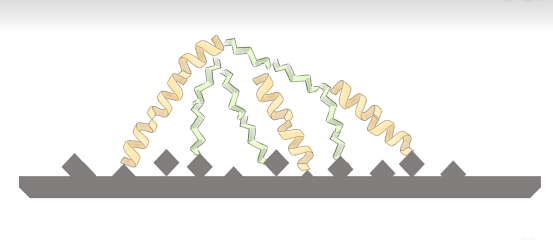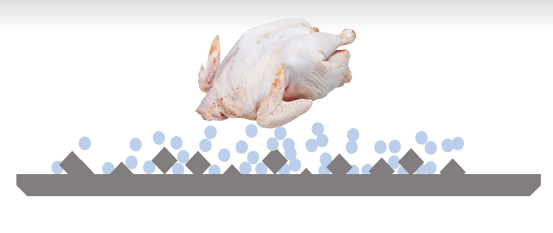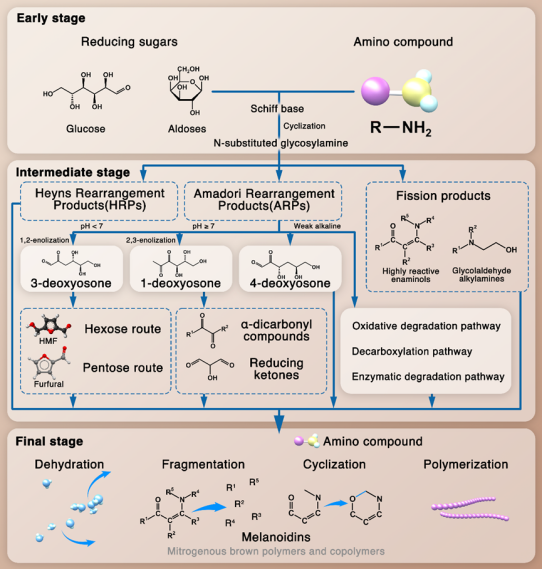Understanding Why Food Sticks to Pans
A common problem is that food sticks to the cookware, but before we can solve this problem, let’s take a close look at the root cause of it. When it comes to the kitchen, sticky situations usually fall into two main categories of food substances.
1.Good blossoms: Creamy proteins found in the meat, bird and in sacks of protein.
2.Free amino acids, free and bound sugars, starches: Found primarily in cooking liquid of food items.
These substances interact with the pan’s surface so that they encourage sticking. Let’s explore how.
1. The Protein Factor: In A Landscape, Chemical Reactions
Proteins denature in the presence of a metal which is why when you heat high-protein foods like meats and eggs in a metal pan, they get stuck to it. The process gradually opens up their intricate three-dimensional structures, revealing reactive side chains and amino groups. These polyester groups an the carboxylate group are free, allow them to react with metal atoms (iron is especially present here) at the surface of the pan.

The surface of stainless steel pans is less reactive than that of pure iron, but there are still metallic atoms available for interaction with denatured proteins. This chemical bonding is now what we call the food being “glued” to the pan, which equals sticking.
2. Liquid Ingress: Pan Crevices serve as pinch pores
Food breaks down while its cooking and releases liquid that has amino acids, sugars and starches. This is so these liquids can find their way to those microscopic nooks and grannies and get stuck in whatever crevices or pores the pan’s surface may have. When you heat the pan, a number of things occur:

Maillard Reaction: Compounds are brown in color and formed by amino acids and sugars, changes occur through non-enzymic browning at high temperatures. These polymers can get trapped in the pan’s surface defects, leading to stickiness.

Starch Gelatinization: Starches absorb water, swell, and begin to stick to the surface.
These processes happen simultaneously. While stainless cookware can be non-stick, methods must be approached holistically with these factors in mind.
Two Steps to Avoid Sticking: Part I — Don’t Get Stuck
1.Inhibit Protein Binding the pan surface
Reduce Direct Contact: Use a barrier between food and the metal surface.Pre-Cooked Ingredients: For example, using pre-cooked fish slices, where proteins have been denatured, can ease adhesion.
Pre-Cooked Ingredients: For example, using pre-cooked fish slices, where proteins have been denatured, can ease adhesion.
2.Surface Treatment
While stainless steel cannot be seasoned like carbon or cast iron, maintaining a clean, smooth surface can significantly reduce sticking.
The Oil Factor — More than Lubrication
Why Cold Oil on a Cold Pan is Ineffective?
Starting with cold oil in a cold pan can lead to uneven heat distribution, increasing the chance of sticking. When oil is heated, it becomes less viscous and can better cover the pan’s surface.
Best Cooking Temperature: Around 200°C (392°F) is ideal for most cooking oils, ensuring proper viscosity and surface tension.
Smoke Point: Avoid exceeding around 250°C (482°F), as this can cause oil degradation and release harmful compounds.
The Marangoni Effect
As the oil is heated, you might start to see ripples or streaking on the surface. Heating the center of an oil drop leads to surface heating throughout its body, which serves as a measure to identify when the oil has reached the perfect temperature for cooking.
There is a common myth that you should start with a hot pan and cold oil when frying. This process might be effective with classic iron pans due to fast oxidation of the pan surface, but it is not effective with stainless steel cookware. Adding cold oil to a hot pan can create uneven heat distribution and cause sticking.
The Leidenfrost Effect: Not a Solution for Everyday Cooking
The Leidenfrost effect occurs when water droplets bounce on a hot surface due to vapor. While it may prevent sticking in the short term by keeping food off the pan, it is not functional for everyday cooking:
- Heat Source Intensity: The pan needs to be dangerously hot, leading to the risk of burns.
- Texture Issues: It doesn’t turn food into a smooth mix.
- Temperature Control: It can be difficult to maintain high enough temperatures for extended periods.
- Safety Risks: Hot pans increase the risk of burns and kitchen accidents.
Straightforward Advice on Cooking Without Sticking in Stainless Steel Pans
1.Preheat the Pan Properly: Begin at medium heat for uniform heating. Sprinkle a few drops of water into the pan; if they sizzle and evaporate quickly, the pan is hot.
2.Add the Right Amount of Oil: Heat about 1/4 inch of oil until shimmering (not smoking) before adding food.
3.Observe the Oil’s Behavior: Watch for ripples or patterns in the oil, indicating it has reached the right temperature.
4.Maintain Proper Cooking Temperature: Keep the oil below its smoke point and adjust heat as necessary.
5.Exercise Patience: Allow proteins to set before flipping or stirring food. Avoid using metal utensils to prevent scratching.
Understanding Pan Surface and Maintenance
Surface Smoothness: Stainless steel pans are smoother than cast iron or carbon steel, reducing the likelihood of food getting stuck.
Cleaning and Care: Clean the pan thoroughly after each use to prevent residue buildup, which can lead to sticking.
Seasoning Stainless Steel?
While stainless steel lacks the seasoning properties of cast iron, some chefs suggest heating oil in a stainless steel pan to create a thin polymerized skin that can temporarily improve non-stick properties. However, this is much less durable than traditional seasoning.
Are Stainless Steel Pans Worth It?
Despite the sticking issues, stainless steel pans offer several advantages:
- Dauerhaftigkeit: They are resistant to rust, corrosion, and spalling.
- Versatility: Suitable for various cooking methods, including searing and frying.
- Gleichmäßige Wärmeverteilung: Especially in multi-layer constructions.
Custom Solutions for Stainless Steel Cooking Pots
As one of the best custom stainless steel cookware manufacturers, we know exactly how to design and improve products. We offer solutions like stove burner covers, minimal sticking engineered pots, and customized culinary tools based on your needs and preferences.
- Advanced Surface Treatments: Enhance smoothness and reduce reactivity.
- Multi-Layer Design: Maximizes heating performance and heat retention.
Schlussfolgerung
Stainless steel pans that stick are not a fate we must accept. The good news is that through understanding the science behind cooking, you can achieve truly natural non-stick performance without resorting to synthetic coatings.
- Preheat Pan and Oil to the Right Temperatures
- Control Temperature
- Use Oil Properly
- Let the oil cover the entire pan
By following these guidelines, you can maximize the benefits of stainless steel cookware in both home and professional kitchens.
